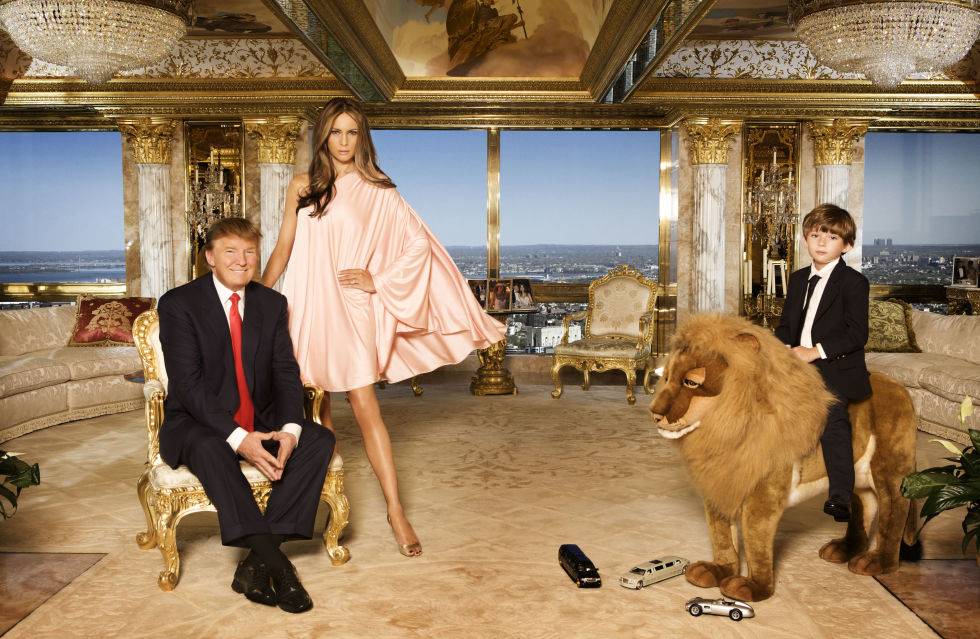Fidel Castro attempted to hide his extravagances, but he was an outlier among recent dictators, most of whom have taken pains to cultivate conspicuous displays of wealth, which they believe projects unassailable power. It’s a sort of autocratic architecture, a weaponized interior design. Big, shiny hotel-esque hideousness was the preference of Nicolae Ceausescu, Saddam Hussein and Muammar Qaddafi, all of whom seemed to have uniformly possessed a child’s comprehension of what affluence should look like: a Vegas casino in which the house always wins.
The new millennia has continued with much of the same, though more zeros have been added at the end of the number with the rampant kleptocracies in Russia and Dubai, among other tyrannical regions of the globe. With the election of Trump, a tin-pot dictator painted gold, the White House now has a figure given to ridiculous gaudiness, and his use of the Oval Office as a cash register for himself and his family is an unsurprising extension of this greed motif. It’s the prosperity gospel of a President who doesn’t like to read.
From “Trump’s Dictator Chic,” Peter York’s excellent Politico article:
Then, in late 2015, I came across a set of pictures with no identifying text. They appeared to show a gigantic apartment in what looked, from the windows, very much like New York. But I know Manhattan and its sophisticated style pretty well, and at first glance, you would think the place didn’t belong to an American but to a Russian oligarch, or possibly a Saudi prince with a second home in the United States. There were overscaled rooms, and obviously incorrect-looking historical detailing and proportions. The home had lots of gilded French furniture and the strange impersonal look of a hotel lobby, with chairs and sofas placed uncomfortably far from one another. There were masses of gold; there were the usual huge chandeliers, branded relics of famous sportsmen like Muhammad Ali, and mushroom-colored marble floors. There was relatively little in the way of paintings, but otherwise, the place reeked of dictator chic.
As it turned out, this familiar yet unfamiliar apartment—a familiar style to me by then, but in an unlikely location—belonged to Donald Trump, who by then was running for president. This was the penthouse of the potential leader of the free world. The design work, I have since learned, was started by the late Angelo Donghia, a decorator better known for a chic Manhattan look. But the substantive current design had been done by one Henry Conversano, who designed extensively—and perhaps unsurprisingly—for casinos. No matter how you looked at it, the main thing this apartment said was, “I am tremendously rich and unthinkably powerful.” This was the visual language of public, not private, space. It was the language of the Eastern European and Middle Eastern nouveau riche.
Why does all of this matter? Domestic interiors reveal how people want to be seen. But they also reveal something about the owners’ inner lives, their cultural reference points and how they relate to other people. With its marble-inlaid dining table, painted ceilings and gold flourishes quite literally everywhere, Trump’s aesthetic puts him more in the visual tradition of Turkmenistan President Saparmurat Niyazov, who erected a massive rotating golden statue of himself in Ashgabat, than the self-effacing gray-suited conventions of Western democratic leaders. Atop Trump Tower, Trump’s apartment projects a kind of power that bypasses all the boring checks and balances of collaboration and mutual responsibility and first-among-equals. It is about a single dominant personality.
This, of course, is a startlingly un-American idea.•
Tags: Donald Trump, Peter York

